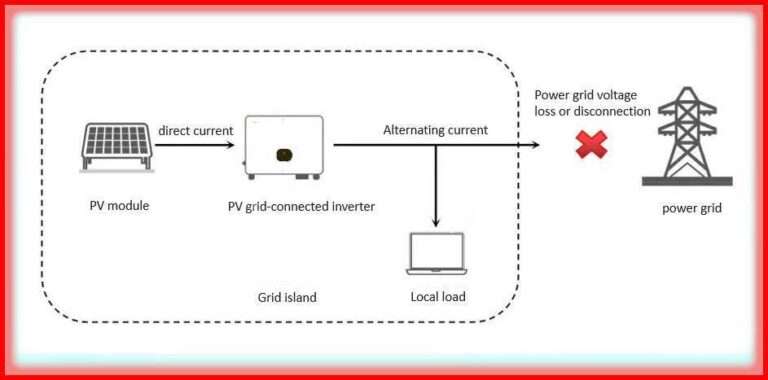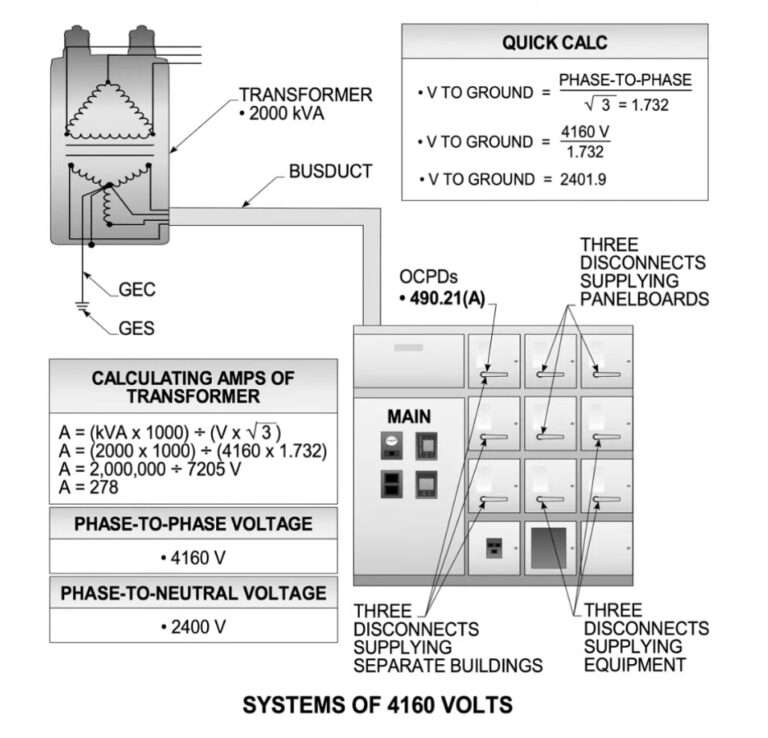Generator Sizing for UPS Systems
When planning power backup, generator sizing for UPS systems is a critical consideration. An undersized generator may fail under load. An oversized one can waste fuel and money. The goal is to find the perfect match between the UPS and the generator. This requires understanding how both systems work together.
A UPS (Uninterruptible Power Supply) provides instant power when the main grid fails. It ensures sensitive loads like servers, medical systems, and industrial controls remain online. However, the UPS alone runs for a short time. A generator must take over for long-duration outages.
Understanding Generator Sizing for UPS Systems
The process of generator sizing for UPS systems starts with the UPS capacity. It is usually rated in kVA or kW. But you can’t just match the generator to the UPS output. You must consider multiple technical factors. These include inrush current, battery charging, load characteristics, and generator voltage regulation.
The generator needs to support not only the UPS but also its charging system. If the UPS has a 100 kW load, the generator may need to be 125 kW or more. This ensures the UPS can charge while still supporting the load.
Static vs. Rotary UPS and Its Impact on Sizing
UPS systems come in two main types: static and rotary. Static UPS systems use power electronics. Rotary UPS systems include rotating components like flywheels or motors.
Static UPS systems present nonlinear loads. This causes harmonic distortion. Generators must have sufficient capacity to handle these harmonics. Otherwise, voltage waveform distortion can damage equipment. A backup generator sizing calculator can help you account for harmonics.
Rotary UPS systems are more generator-friendly. They isolate the generator from the nonlinear loads. This reduces the kVA rating needed for the generator.
Generator Sizing for UPS Systems with Step Load Changes
Generators must handle step load changes when the UPS switches to generator power. For example, if a UPS supports a data center, the switch to generator mode can be sudden. If the generator voltage or frequency dips, the UPS might malfunction or switch to battery.
Learn more about how to design LV and MV systems
Oversizing the generator reduces this risk. A common practice is to size the generator at 1.25 to 1.5 times the UPS capacity. This provides buffer for load steps and battery charging.
Here’s a simple guideline table:
| UPS Size (kW) | Recommended Generator Size (kW) |
|---|---|
| 50 | 62.5 to 75 |
| 100 | 125 to 150 |
| 250 | 312.5 to 375 |
| 500 | 625 to 750 |
The actual value depends on UPS technology and site conditions.
Generator and UPS Compatibility Considerations
Voltage regulation is another key factor in generator sizing for UPS systems. UPS units require stable voltage and frequency. Poor regulation causes the UPS to go into bypass or battery mode.
AVR (Automatic Voltage Regulators) in generators help maintain voltage stability. Digital voltage regulators are better suited for UPS loads. They respond quickly to voltage changes.
Also, consider frequency variation. UPS systems typically tolerate ±2% frequency variation. If the generator frequency drifts too much, the UPS may disconnect.
Generator Sizing for UPS Systems Feeding VFDs and Motors
Many UPS systems feed Variable Frequency Drives (VFDs) and pumps. These loads require special attention. VFDs can cause high harmonic currents. Pumps can draw large inrush current during startup.
When such loads are present, it is essential to use a Generator Sizing Calculator for VFD Motors or a Generator Sizing Calculator for Pumps. These calculators factor in peak current, harmonics, and duration of starting events.
In some cases, harmonic filters or K-rated transformers are recommended. They protect both the generator and UPS from distortion.
Circuit Breaker Coordination for UPS-Connected Generators
Generator circuit breaker sizing is another critical step. The breaker must handle the generator’s full-load current, short-circuit levels, and motor starting surges.
The breaker rating should exceed the full-load current by 125%. Coordination between UPS input breakers, bypass input, and generator output is essential. This prevents nuisance tripping during load transitions.
Use a Select Generator Circuit Breaker Sizing Calculation method that factors in breaker curve coordination. This ensures that only the affected breaker trips in fault conditions.
Here is a basic table for reference:
| Generator Size (kW) | Typical Breaker Size (A) at 400V |
|---|---|
| 50 | 100 |
| 100 | 200 |
| 250 | 400 |
| 500 | 800 |
Actual sizing depends on generator voltage and breaker type (thermal-magnetic or electronic).
Generator Control System and Synchronization with UPS
For large systems with parallel UPS and generators, synchronization is key. The generator must synchronize frequency and phase with the UPS bypass. This ensures a smooth handover of loads.
Modern generators come with digital control panels. They support automatic synchronization. Some also offer load demand start-stop logic. This allows generators to turn on only when needed.
Such systems improve efficiency and fuel savings. They also reduce noise and wear on the generator.
Fuel Type and Runtime Considerations
In generator sizing for UPS systems, fuel type affects runtime. Diesel is the most common due to high power density. However, natural gas and bi-fuel options are also available.
Runtime depends on fuel tank size. For critical applications like hospitals, you may need 24 to 48 hours of autonomy. Always account for generator efficiency when calculating fuel consumption.
For example, a 100 kW generator may consume 7 to 10 gallons of diesel per hour. You’ll need at least 240 gallons for one day of operation.
Redundancy in Generator Sizing for UPS Systems
For mission-critical systems, N+1 or 2N redundancy is recommended. This means having one or two extra generators beyond what is needed.
This provides fault tolerance. If one generator fails, others can take over. Redundancy is a key part of data center Tier III or Tier IV design.
You can model these scenarios using a Backup Generator Sizing Calculator. It helps visualize worst-case failure scenarios.
Cooling and Ventilation for UPS Generators
Generators produce heat. Cooling is vital. Oversized generators generate even more heat. Without proper ventilation, generator rooms can overheat, causing shutdowns.
Ensure that intake and exhaust airflow matches generator specs. Use louvers and fans to manage temperature.
Air-cooled systems are fine for small generators. For larger systems, water-cooled designs offer better performance and noise control.
Acoustic and Environmental Considerations
Generators for UPS systems often run in residential or hospital areas. Noise must be minimized. Acoustic enclosures and mufflers help.
Also, comply with local emission standards. Tier 4-compliant diesel engines reduce NOx and particulate matter.
Noise levels should stay below 75 dBA at 7 meters for most urban installations.
Testing and Maintenance
Once your generator sizing for UPS systems is complete, regular testing is essential. Monthly load testing ensures readiness.
Automatic load banks simulate real load. This helps keep generator engines healthy. Batteries and fuel systems should also be tested and maintained regularly.
Neglecting maintenance can result in generator failure during an outage. Always follow manufacturer guidelines.
Final Thoughts on Generator Sizing for UPS Systems
Accurate generator sizing for UPS systems ensures seamless power during outages. It protects sensitive equipment, reduces downtime, and supports business continuity.
Always consider total load, UPS type, harmonics, and breaker sizing. Use tools like Generator Sizing Calculator for VFD Motors, Generator Sizing Calculator for Pumps, and Backup Generator Sizing Calculator for precision.
Include coordination for Generator Circuit Breaker Sizing to avoid trip faults. A properly sized generator is more than backup—it’s a long-term investment in reliability.
Follow Us on Social:
Subscribe our Newsletter on Electrical Insights to get the latest updates in Electrical Engineering.
#GeneratorSizing, #UPSSystems, #BackupPower, #EmergencyPower, #GeneratorSelection, #PowerContinuity, #UPSBackup, #DieselGenerators, #PowerOutageSolutions, #GeneratorSetup, #UPSIntegration, #ElectricalEngineering, #PowerReliability, #IndustrialPower, #CriticalInfrastructure





